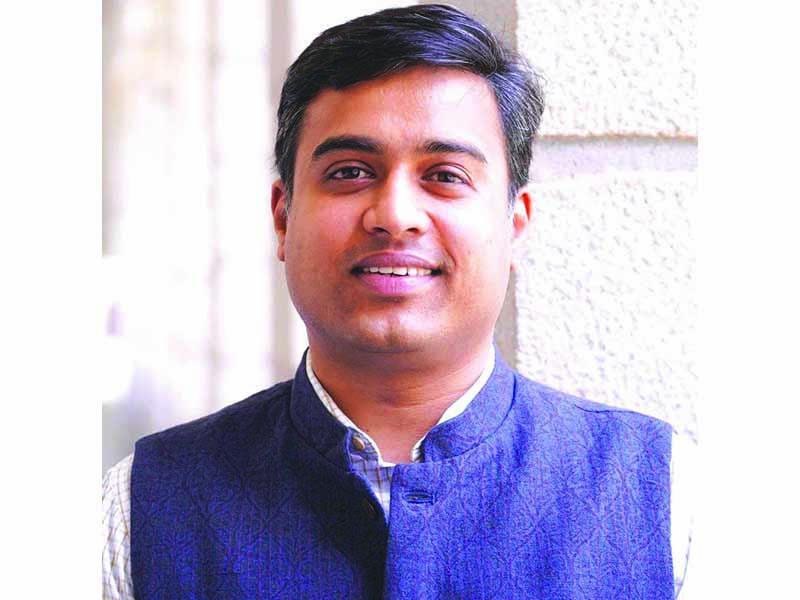Producing internationally minded graduates
– Dr. Chetan Singai

The National Education Policy (NEP) 2020 positions internationalisation of higher education as a key reform. It advocates establishment of foreign university campuses in India, promotion of student and faculty mobility, expansion of joint degree programmes, and fostering international research collaborations to transform India into a competitive, globally connected education hub for learning and innovation.
Five years since implementation of NEP 2020, the beginnings of globalisation can be seen in the Indian higher education sector. Vocabulary once reserved for academia is now being used in conversations between higher education leaders, policymakers and students.
The huge annual outflow of students compared to a dull inflow has been a pain area for India’s policymakers, keen to establish India not merely as a supplier of students to foreign universities but also as a magnetic pole to attract the brightest minds of the world. Lately, we are witnessing higher education institutions (HEIs) from around the world setting up campuses in India even as Indian HEIs are multiplying dual degree programmes and academic credit exchanges with foreign HEIs to deliver quality tertiary education.
In 2024, Deakin University, Australia became the first foreign HEI to establish a campus in GIFT City, Gujarat. It has been followed by the University of Southampton (UK) which inaugurates its first Indian campus in Gurugram, Haryana, this month. Newcastle University and the University of Surrey are preparing to follow suit. Foreign HEIs have realised that merely attracting Indian students to their expensive campuses abroad is becoming unviable. Establishing physical campuses in India allows them to deliver more affordable quality education closer to where demand is rapidly growing.
This global turn marks a structural re-orientation of higher education. Internationalisation today extends far beyond student exchanges: it involves embedding international perspectives into teaching, research, and institutional strategy in domestic HEIs. Knowledge creation and application now transcend borders, necessitating deeper engagement.
In the circumstances, Indian HEIs must adapt to achieve NEP 2020’s goal of internationalisation. Outbound student mobility is rising, but India’s strongest pull factors are affordable tuition fees and English as medium of instruction. Elite research institutions in the country already boast global linkages and world-class infrastructure, while a rising number of domestic universities are contracting long-term MoUs with overseas partners.
Today, internationalisation extends far beyond student exchanges: it involves embedding international perspectives into teaching, research, and institutional strategy in domestic HEIs
Yet success will not be measured only by the number of foreign students enroling in Indian HEIs. True internationalisation will be reflected in the quality of graduates certified and knowledge systems nurtured. Curricula need to develop intercultural competence and comparative perspectives, while research must embrace cross-border collaborations and funding partnerships. The real test is in producing globally minded graduates who can thrive in an interconnected world. Internationalisation is as much about mindset as mobility — about reimagining higher education as a shared, interconnected project.
At the same time, outward reach is not without risks. Internationalisation can reinforce inequalities by privileging students who can afford mobility programmes or by entrenching English as the dominant academic language at the expense of regional languages and perspectives. There is also the danger of academic neo-colonialism, with knowledge flowing disproportionately from North to South, marginalising local voices. If India is to avoid these pitfalls, it must balance openness with equity, ensuring diverse voices shape the global exchange of ideas.
For policymakers, the challenge lies less in designing new policies and more in enforcing ones already in place. NEP 2020 provides a clear roadmap, but effective implementation is still lagging. Infrastructure must keep pace with ambition, providing modern laboratories, student hostels and well-equipped campuses. Regulatory frameworks for partnerships and faculty recruitment must align with international academic calendars rather than domestic bureaucratic timetables. Sustained public and private investment, strong institutional leadership, and rigorous quality assurance is vital if India is to establish itself as a true global education hub rather than remain a country that exports talent overseas.
The potential is undeniable. With its low-cost base, English-speaking environment, and demographic advantage, India is uniquely placed to attract students and researchers from around the world, especially from developing countries. If this is combined with expanded research networks, active global marketing, and consistent policy implementation, the balance could shift quickly in India’s favour.
The next decade will be decisive. Whether India can implement the ambitions of NEP 2020 will determine if it emerges as a genuine international education hub or continues to remain primarily a supplier of talent to the rest of the world.
Also Read: Disturbing elite migration phenomenon
















Add comment